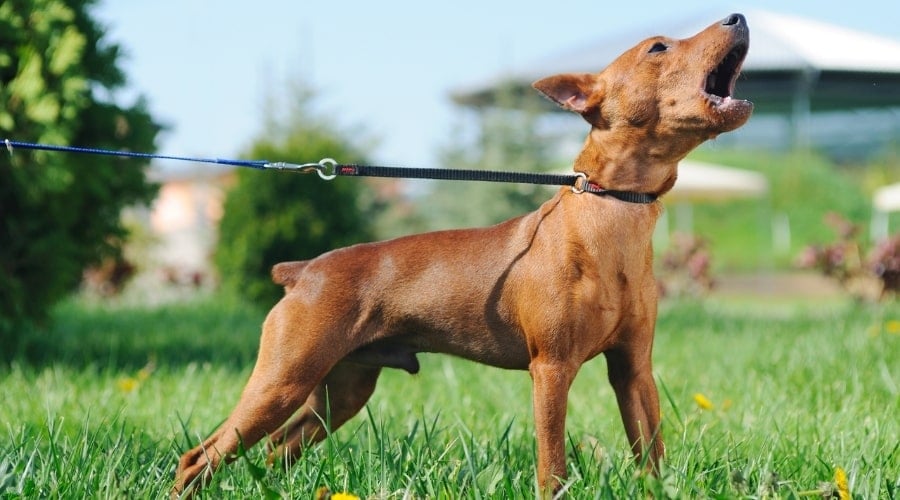New Dog Bite Statistics Revealed: Top Dog Breeds Linked To Bites & Bite Risks
When you purchase through links on our site, we may earn a commission. Here’s how it works.
Each year, a staggering 4.5 million dog bites occur in the United States, with 800,000 of these bites resulting in medical treatment, according to the Centers for Disease Control and Prevention (CDC). This equates to 1 in 74 Americans experiencing a dog bite annually—one of the many dog bite statistics that underscore the need for greater awareness and education.
Table of Contents
While these numbers are alarming, it’s crucial to understand that dog bites aren’t simply the fault of certain breeds. Dog bites are rarely a result of breed alone; instead, they stem from a complex interplay of factors, including a dog’s environment, training, and humans’ ability to recognize and respond to canine communication.
Dogs rely on subtle cues to express discomfort, fear, or stress—signals that are often misunderstood or overlooked. Understanding these behaviors and addressing the broader “nature versus nurture” discussion surrounding canine aggression is key to preventing incidents. By equipping yourself with the right information, you can help foster safer relationships between humans and dogs.
Note: This article is based on third-party statistics. It does not necessarily represent the opinions of this website.
5 Reasons Why Dogs Bite
Before we start profiling dogs or analyzing your behavior around them, it’s essential to ask the fundamental question: Why does a dog bite?
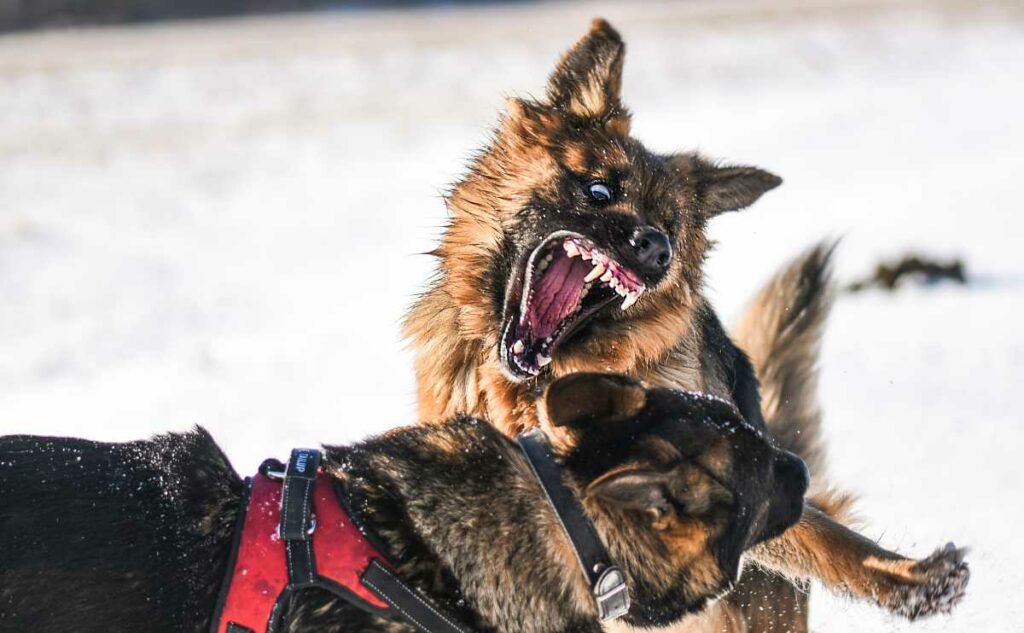
Understanding the root causes is key to preventing incidents and fostering safe interactions between humans and dogs. Let’s explore the top five reasons why dogs may bite and what you can do to mitigate the risks.
1. Dogs Bite as a Reaction to a Stressful Situation
Stress is one of the most common triggers for dog bites. Like humans, dogs have limits when handling high-stress or overstimulating situations.
When a dog feels overwhelmed by a chaotic environment, excessive noise, or an unfamiliar situation, it may lash out as a defensive reaction. For example, a dog in a crowded park may become agitated if approached too quickly or surrounded by unfamiliar people.
Recognizing stress signals is crucial to avoiding bites. To communicate their discomfort, dogs often exhibit subtle cues, such as pacing, panting, yawning, or pinned-back ears.
If you ignore these warning signs, a bite may follow. Understanding and respecting a dog’s stress levels can create a safer environment for both the animal and yourself.
2. Fear or Feeling Threatened
Fear is another powerful motivator for dogs to bite. When a dog feels cornered or senses an immediate threat, their instinct is to protect itself. This reaction is particularly common in rescue dogs or those with a history of abuse, as they may associate certain situations or gestures with past trauma.
To minimize the risk, approach dogs calmly and allow them to come to you on their terms. Avoid sudden movements, loud noises, or invading their personal space.
Building trust takes time, and respecting a dog’s boundaries is key to reducing fear-based aggression.
3. Protecting Themselves, Their Puppies, or Their Owners
Dogs have strong protective instincts, which can sometimes lead to bites. Whether they’re guarding their puppies, food, toys, or even their owners, dogs may perceive a threat where none exists. This behavior is often rooted in their pack mentality and instinct to defend what they consider valuable.
To prevent protective biting, it is essential to avoid actions that a dog might interpret as threatening. For example, never reach for a dog’s food bowl or try to handle their puppies without establishing trust.
If a dog appears to guard their owner, give them space until the situation de-escalates. Proper training and socialization from an early age can also help reduce overly protective behaviors.
4. Not Feeling Well or Being Startled
Health issues or unexpected stimuli can also lead to biting. A dog that isn’t feeling well, whether due to injury, illness, or pain, may react aggressively when touched or approached. Similarly, a startled dog may nip or bite instinctively.
Always approach a dog gently and observe their body language for signs of discomfort, such as limping, whining, or lethargy.
If a dog appears unwell, consult a veterinarian rather than trying to handle them directly. Also, teach children to avoid surprising or disturbing dogs, especially when sleeping or eating.
5. Nipping or Biting During Play
Playtime is a natural part of a dog’s life, but it’s important to recognize when playful behavior crosses the line.
Dogs may nip or bite during play, especially if they become overly excited or haven’t been taught appropriate boundaries. Roughhousing can escalate quickly, leading to unintentional injuries.
To prevent this, avoid engaging in overly physical or rough play with dogs, particularly large breeds or those prone to excitement. Instead, use toys to channel their energy and set clear boundaries for acceptable behavior.
Training and consistently reinforcing commands like “gentle” can help dogs learn to play safely.
Staying Aware: The Key to Prevention
By understanding the triggers that lead to dog bites, you can better navigate interactions with canines. Your awareness plays a critical role in preventing bites, whether it’s recognizing signs of stress, respecting a dog’s boundaries, or ensuring safe play. A proactive approach keeps you safe and fosters positive relationships with the dogs in your life.
Shocking Dog Bite Statistics
Here are some eye-opening statistics that highlight the realities of dog bites in the United States.
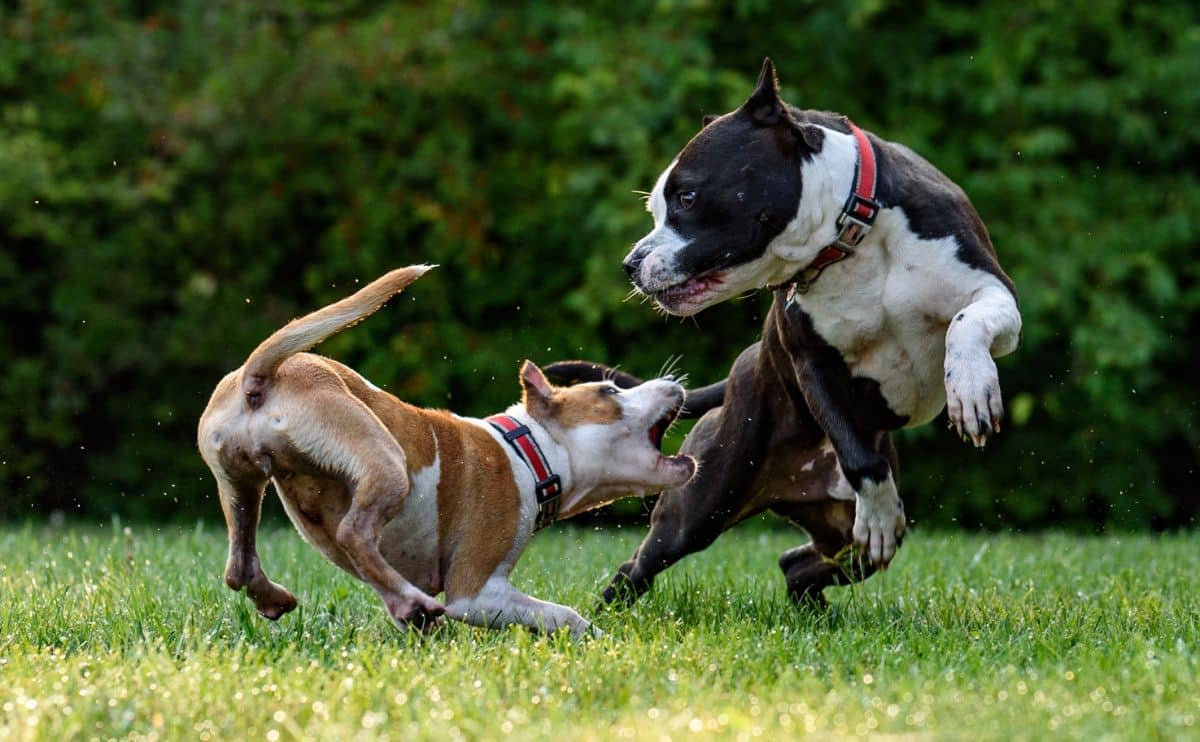
Dog Bites In The U.S.
- Each year, an estimated 4.5 million dog bites occur in the United States, according to the Centers for Disease Control and Prevention (CDC). Of those, roughly 334,000 people require emergency medical care for bite-related injuries.
- Between 2011 and 2021, there were 468 recorded deaths from dog bites or related trauma — an average of 43 fatalities per year nationwide. While tragic, these numbers represent a fraction of total incidents, underscoring how rare fatal attacks truly are.
Where & How Attacks Happen
- Most bites occur close to home. Research shows that 80% of dog bites happen in private residences, not public spaces. In fact, 77% of biting dogs belong to the victim’s family or a friend, according to public-health surveillance data.
- A analysis of fatal incidents from 1989 to 1994 found that 59% of deaths involved unrestrained dogs on their owner’s property, compared to 22% off-property and 18% restrained on-property. These findings highlight how supervision and containment can drastically reduce risk.
Who’s Involved
- Studies consistently link certain human factors to higher bite rates. Intact (unneutered) male dogs account for 70–76% of reported bite incidents, while children under 12 represent nearly half of all emergency-department visits.
- Kids between ages 5 and 9 are bitten most frequently, often by familiar dogs in everyday settings.
- The U.S. Postal Service reported more than 6,000 incidents of dog attacks on mail carriers in 2024.
Which Breeds Are Named Most Often
- The most comprehensive study to date, published in JAVMA, found that in 82% of fatal dog bite cases, the breed of the dog could not be reliably confirmed.
- According to the American Veterinary Medical Association (AVMA), the breeds most frequently represented in serious biting incidents include German Shepherds, mixed breeds, Pit Bull–type dogs, Rottweilers, Jack Russell Terriers, Chow Chows, Spaniels, Collies, Saint Bernards, and Labrador Retrievers.
- Experts emphasize that these findings do not prove a link between breed and aggression. Misidentification, population size, and owner management play major roles in which breeds appear most often in reports.
3 Breeds Most Often Named In Attack Reports
Despite the challenges of breed identification, certain breeds appear more frequently in dog bite and attack reports. Across multiple studies, Pit Bull–type dogs, Rottweilers, and German Shepherds are the breeds most often associated with severe or fatal attacks.
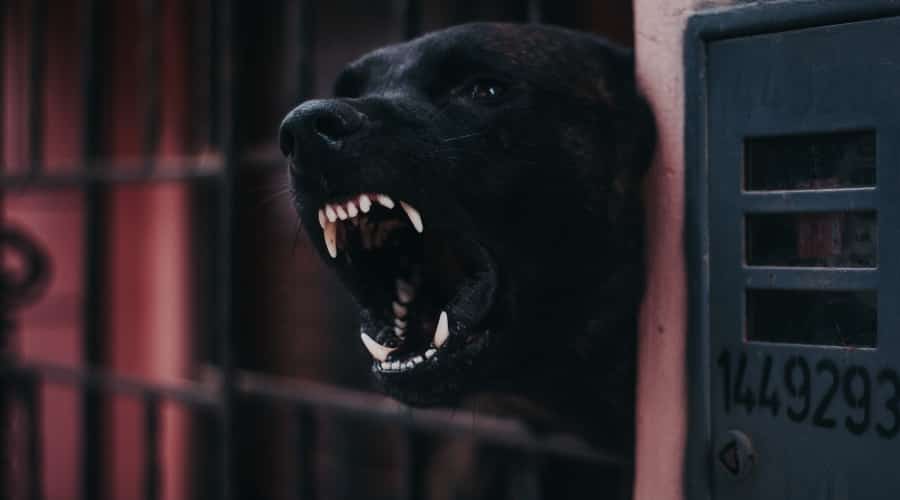
These findings do not prove that specific breeds are inherently more dangerous. Instead, they reflect overlapping influences:
- Owner influence: Breeds chosen for guarding, protection, or status may be at higher risk when poorly trained or managed.
- Popularity and exposure: The more dogs of a particular breed there are, the greater the likelihood of incidents.
- Misidentification: Dogs labeled as “Pit Bulls” often include mixed breeds with little or no actual relation.
1. Pit Bull–Type Dogs
Pit Bull–type dogs are the most frequently named group in fatal bite studies and analyses of dog attacks by breed. However, the term “Pit Bull” encompasses several distinct breeds — including the American Pit Bull Terrier, Staffordshire Bull Terrier, American Staffordshire Terrier, and Bull Terrier — along with many mixed breeds that resemble them.
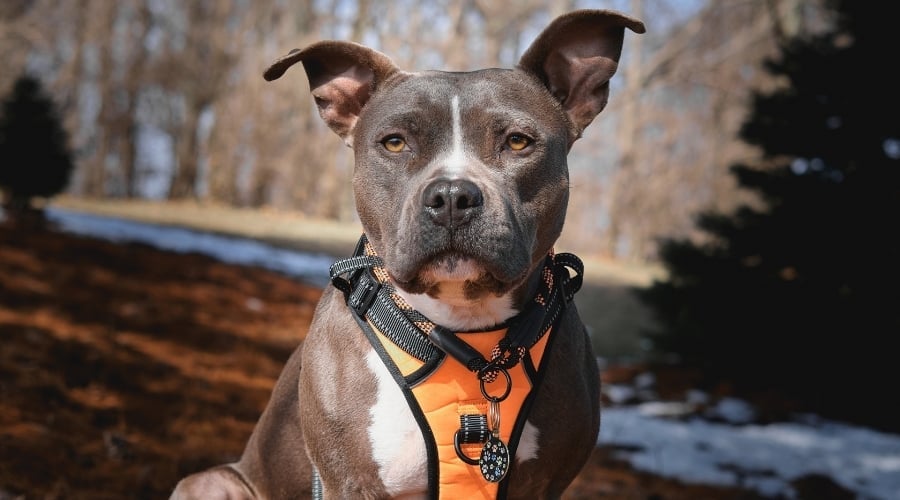
- A CDC review (1979–1996) found 60 fatalities involving Pit Bull–type dogs, more than any other breed category.
- A separate study of 157 fatalities (1979–1988) reported Pit Bull involvement in 42% of cases where breed was documented.
- A pediatric review of nearly 15,000 dog bites (2007–2015) found Pit Bulls accounted for 27% of cases, particularly among teens.
- A 2017 single-institution trauma study found Pit Bull bites represented half of all surgeries performed and were 2.5 times more likely to involve multiple body regions than other breeds.
While size remains the strongest predictor of bite force, a 2020 Journal of Experimental Biology study confirmed that large brachycephalic dogs (such as Pit Bulls, Rottweilers, and Bulldogs) have a biomechanical advantage when biting, allowing them to cause more damage.
Takeaway: Pit bull–type dogs are the most frequently named in serious bite data, but inconsistent labeling, owner factors, and popularity make those numbers less straightforward than they appear.
2. Rottweilers
Rottweilers consistently rank just behind pit bulls in fatality data.
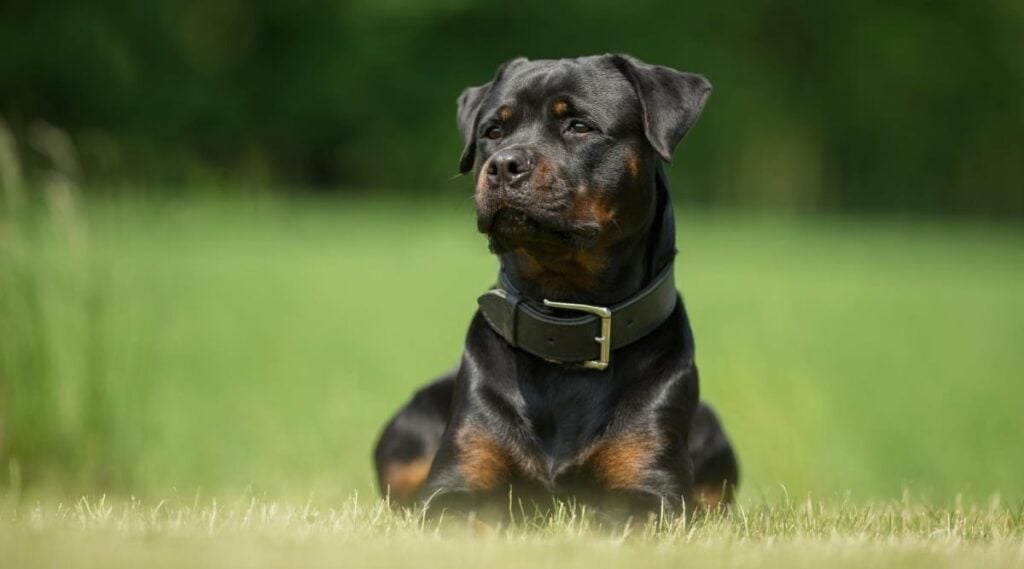
- In the CDC’s 17-year review, 29 fatal cases involved Rottweilers — about 7% of total dog-bite–related deaths.
- An AVMA review spanning 20 years found that Pit Bulls and Rottweilers together accounted for more than half of fatal attacks, even though at least 25 different breeds were represented overall.
Their large size, guarding instincts, and muscular build contribute to the severity of attacks, but again, breed prevalence and owner behavior are major variables.
3. German Shepherds
German Shepherds are intelligent, loyal, and protective, which makes them invaluable for police and military work—but those same traits require careful management in a household setting.
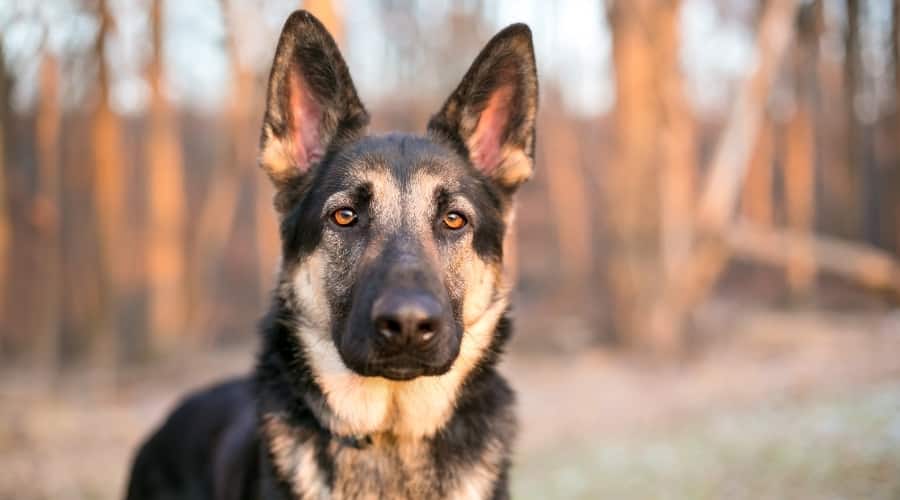
- In CDC bite-fatality data, German Shepherds ranked third, with 19 reported deaths between 1979 and 1996. Pediatric bite data also place them second only to Pit Bulls for child-related injuries.
- A study on dog-specific risk factors found German Shepherds and Chow Chows were more likely to bite non-household members, particularly children under 12.
Context Matters: The German Shepherd’s strong guarding instincts explain their overrepresentation in data. Proper training, exercise, and supervision drastically reduce the risk of aggression.
Aggression Patterns By Target
A study in Applied Animal Behaviour Science examined more than 30 popular breeds to see how aggression varies by target: strangers, owners, and other dogs. Because this was based on owner reports and not all breeds were included, the results offer a comparative snapshot rather than a complete picture of breed aggression.
Aggression Toward Strangers
- Dachshund – High stranger aggression, often fear-based
- Chihuahua – Defensive snapping and nipping
- Australian Cattle Dog – Territorial and protective
- Border Collie – Herding instincts can trigger nipping
- Beagle – May bark or snap when insecure
Aggression Toward Owners Or Family
- Beagle – May guard food or toys
- Dachshund – May bite if handled roughly
- Cocker Spaniel – Some show redirected aggression
- Chihuahua – Defensive nipping when startled
- Jack Russell Terrier – High-energy redirection
Aggression Toward Other Dogs
- Akita – Often intolerant of unfamiliar dogs
- Pit Bull–Type Dogs – Higher dog-directed aggression than stranger aggression
- Jack Russell Terrier – Reactive despite small size
- Australian Cattle Dog – Strong guarding instincts
- Chihuahua – Frequent reactivity, often fear-driven
Quick Takeaway: Aggression patterns depend far more on context than breed. Smaller dogs tend to bite more often, while larger dogs cause more severe injuries when they do bite—and most incidents involve familiar people or pets.
Bite Strength 101 (And Why PSI Numbers Mislead)
You’ve probably seen viral bite force charts ranking dog breeds by pounds per square inch (PSI), but they’re almost always inaccurate.
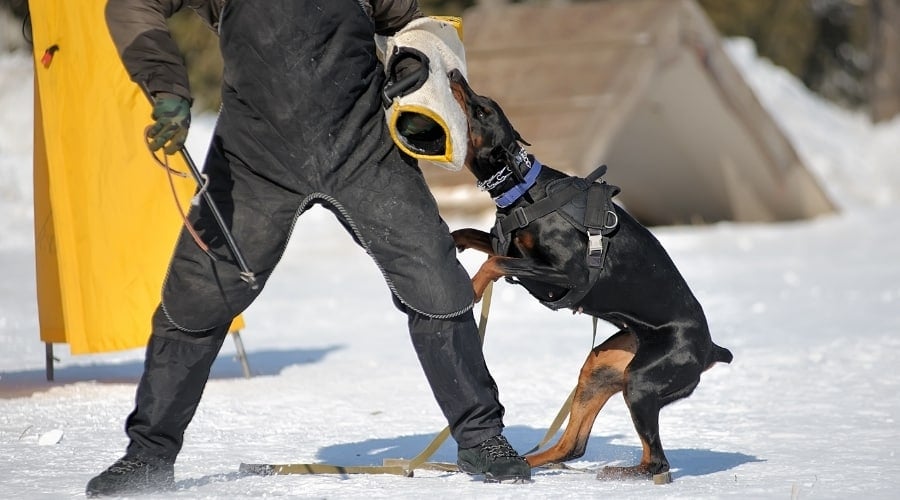
No scientific study has ever measured the bite force of every dog breed, and the few that exist use very small sample sizes. Most “bite force” rankings online are rough estimates rather than actual data.
Why PSI Doesn’t Tell The Full Story
PSI, or pounds per square inch, measures pressure rather than total bite power. A smaller contact area can create a higher PSI even when the total force behind the bite is not greater.
Think of the difference between a high heel and a flat shoe. The heel applies more pressure to a smaller point, but not more overall power.
Because of this, PSI is not a reliable measure of true bite strength. A more accurate metric is total force (in pounds), which reflects how much energy the bite delivers.
What Research Tells Us
A 2020 study in the Journal of Experimental Biology examined how jaw shape relates to bite force in domestic dogs. Researchers found that while overall body size remains the strongest predictor of bite strength, skull shape also plays a role.
Large, broad-headed dogs such as Rottweilers, Pit Bull–type breeds, and Cane Corsos have a structural advantage due to their shorter muzzles and wider jaws.
Key factors influencing bite strength include:
- Body and skull size: Larger heads and wider skulls provide more leverage.
- Muzzle length: Shorter, broader muzzles can concentrate force more efficiently.
- Neck and jaw strength: The masseter and temporalis muscles generate closing power.
- Bite alignment: The way teeth meet, or occlusion, affects how force is distributed.
Real-World Bite Force Testing
Outside laboratory settings, independent testers have attempted to measure bite force using reinforced sleeves.
The Rogue K9 YouTube channel has compared bite forces from over 100 dogs. Although not peer-reviewed, these demonstrations offer rare and measurable insights into bite performance.
Their top performers by breed are:
- Cane Corso: 456 lbs
- Rottweiler: 403 lbs
- Presa Canario: 390 lbs
- Bandog: 372 lbs
- XL Bully: 354 lbs
These results align with what anatomy predicts: large, muscular dogs with broad skulls and short muzzles exert higher bite forces than smaller, narrow-headed breeds.
Quick Takeaway: Bite strength varies more between individual dogs than between breeds. Most PSI charts online are unreliable. True bite power depends on a dog’s size, anatomy, training, and motivation, not just its breed.
How To Protect Yourself Against The Risk Of Dog Bites
Dog liability insurance is a specialized type of coverage designed to protect dog owners financially in case their pet causes an injury or incident. This type of insurance is beneficial for owners of breeds often classified as “dangerous” by landlords, insurance companies, or other entities.

Even if your dog is friendly, accidents can happen, and having insurance provides peace of mind and financial security in such situations.
The primary benefit of dog liability insurance is its ability to cover the costs associated with a claim if your dog bites someone or causes an injury. Medical bills, legal fees, and settlements can add up quickly, leaving pet owners in a difficult financial position.
With insurance, you can file a claim and let the policy cover the expenses, helping you avoid significant out-of-pocket costs. This coverage has sometimes saved dogs’ lives by enabling their owners to address legal or financial challenges rather than face relinquishment or euthanasia.
The statistics emphasize the importance of such coverage: According to the Insurance Insurance Information Institute, the average cost per liability claim related to dog bites and other dog-related injuries in 2023 was $58,545. This substantial amount highlights the potential financial risks for dog owners. Securing a policy prepares you to handle these costs if an incident occurs.
In some situations, landlords or property managers may require liability insurance as a condition of renting, particularly for specific breeds. Even if it’s not mandatory, having coverage can reassure neighbors and visitors, showing that you take responsible precautions as a pet owner.
Ultimately, dog liability insurance is a smart, proactive way to safeguard yourself, your finances, and your pet. No one anticipates their dog causing harm, but accidents can happen, even with the most well-behaved animals. Investing in this coverage allows you to handle unexpected situations confidently and responsibly.
8 Tips On How To Prevent A Dog Bite
Understanding a dog’s behavior and respecting their boundaries is key to preventing unwanted incidents. By following these tips, you can foster safer interactions with dogs and reduce the risk of bites.
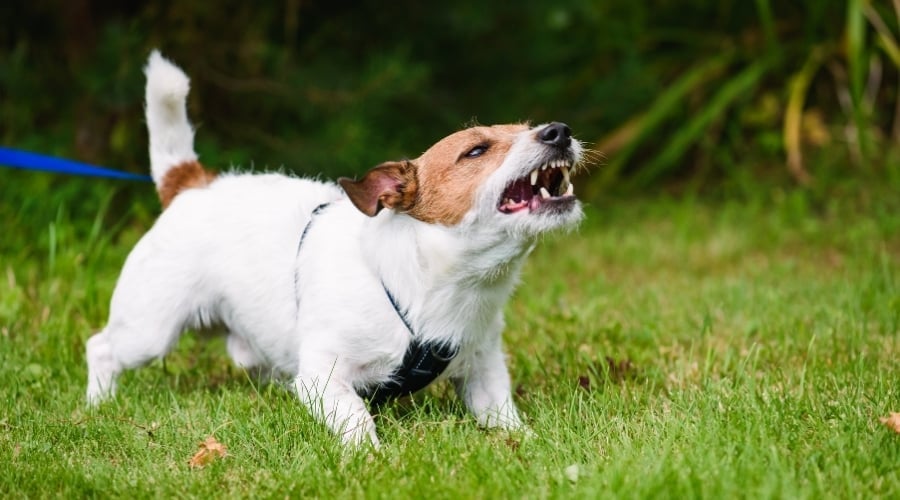
1. Don’t Approach an Unfamiliar Animal
Respecting a dog’s personal space is essential, especially if you don’t know the animal. Unfamiliar dogs may feel threatened by sudden movements or gestures, and approaching them could be perceived as threatening. Always let the dog initiate contact and assess its body language before engaging.
2. Avoid Running, Panicking, or Making Loud Noises
If you encounter a dog unexpectedly, stay calm. Running or panicking can trigger a dog’s prey drive, causing it to chase or react aggressively. Loud noises can startle dogs and escalate their stress. Instead, maintain a quiet and composed demeanor to avoid provoking a reaction.
3. Remain Still if a Dog Approaches You
When an unfamiliar dog approaches, resist the urge to move away quickly or make sudden gestures. Stand still like a tree, avoiding direct eye contact, which some dogs interpret as a challenge. Let the dog sniff you and decide if it feels comfortable with your presence.
4. Respect Dogs’ Boundaries While Eating, Sleeping, or Caring for Puppies
Dogs are naturally protective during vulnerable moments, such as eating, resting, or caring for their young. Disturbing a dog during these times may provoke defensive or aggressive behavior. Give the dog space and avoid interfering with its activities.
5. Let the Dog Sniff You Before Petting
Dogs rely heavily on their sense of smell to assess their surroundings. Allow the dog to sniff you before you attempt to touch it. When petting, aim for the underside of the chin rather than the top of the head, as reaching over the head can feel threatening to some dogs.
6. Report Strays or Dogs Displaying Strange Behavior
Stray dogs or pets exhibiting unusual behavior—such as aggression, confusion, or lethargy—may pose a risk to public safety. Reporting these animals to your local animal control or humane society can help prevent potential incidents and ensure the animals receive proper care.
7. Know How to React If Knocked Over
If a dog knocks you over, it’s crucial to protect yourself. Curl into a ball with your knees tucked in, and use your arms to shield your head, neck, and ears. Avoid screaming or making eye contact with the dog, as this could escalate its aggression. Stay calm and wait for the dog to lose interest.
8. Avoid Encouraging Aggressive Play
While it might seem harmless, roughhousing or encouraging a dog to play aggressively can lead to unintended consequences. Over time, these behaviors can become habitual and may increase the likelihood of a dog bite, even during play. Instead, focus on teaching calm, controlled interactions with your pet.
5 Things To Consider Before Getting A Dog
There are a few key things to consider before bringing a new dog into your home, especially if you already have other animals or children. Below are a few factors that, if considered, can help decrease your chances of an unwarranted attack before an animal ever walks through your front door.
- Dogs with a history of aggression are inappropriate for a home with children. Period.
- Before choosing a dog, research and consult with a professional (a trusted vet or dog trainer would be an excellent resource) to find the best breed for your needs.
- Proper socialization and training for your pup are key.
- Spend time with your prospective pet before adopting to ascertain aggressive tendencies.
- Spay or neuter your animal to reduce aggressive tendencies before bringing them home.

Be Mindful Of “Breeds,” But Not Fearful
You’ve likely heard of the Pit Bull, touted as the type most responsible for dog bites. But you can dismantle much of your fear of them with our Pit Bull Facts article. Unfortunately, claims against Pit Bulls account for the majority of reported fatal attacks in the United States (again, many of these are misreported due to a lack of understanding of dog breeds and types). While there’s no denying that one should be more vigilant around a large dog than, say, a Beagle, there’s also no denying that an animal is a part product of their environment.
Remember that any dog can bite, no matter how well-trained it may be. Many popular family dogs have caused fatalities, including Labradors and German Shepherds. If you have a dog that’s prone to biting, consider a training collar or online training courses to help change their bad behavior.
